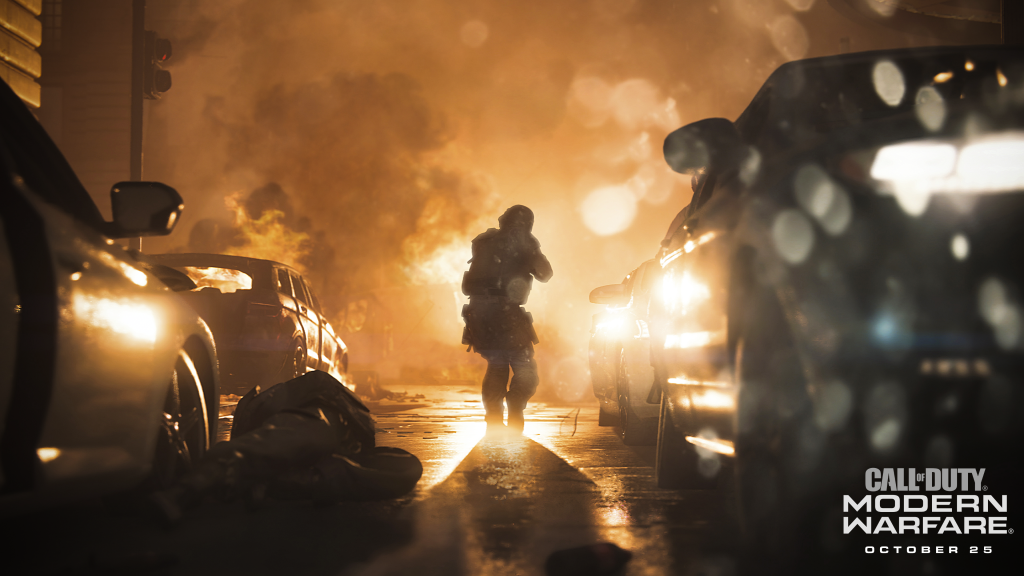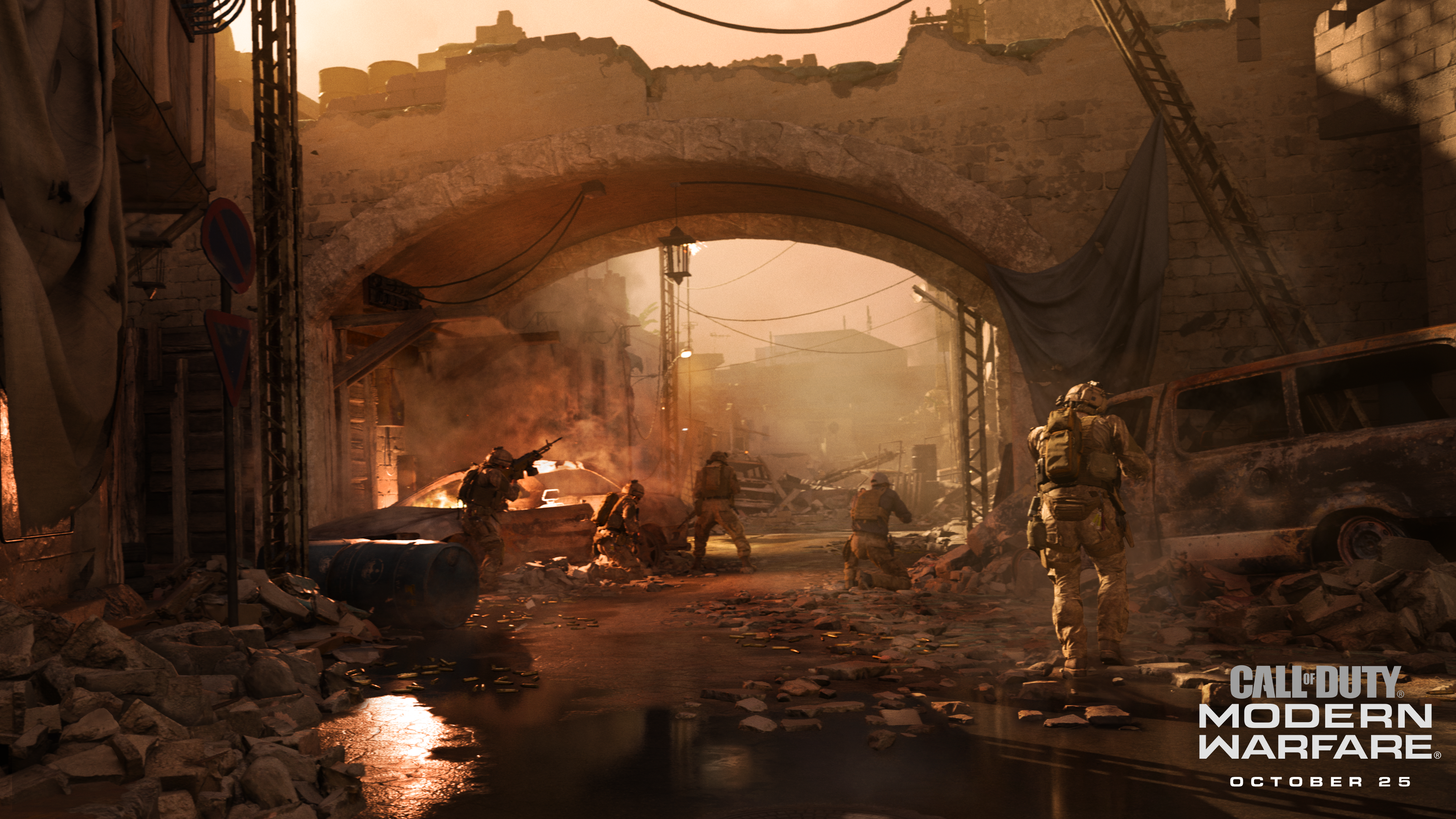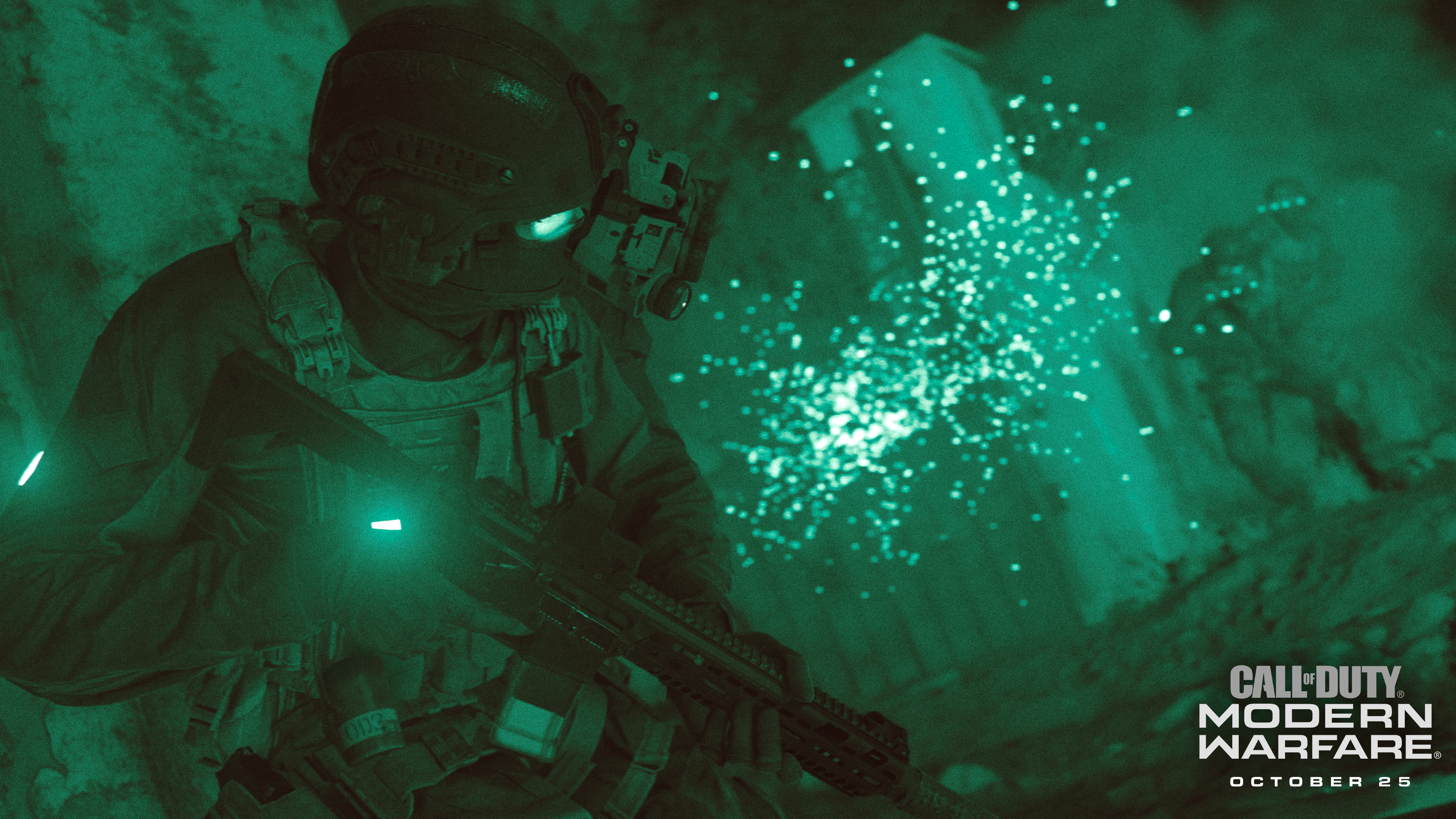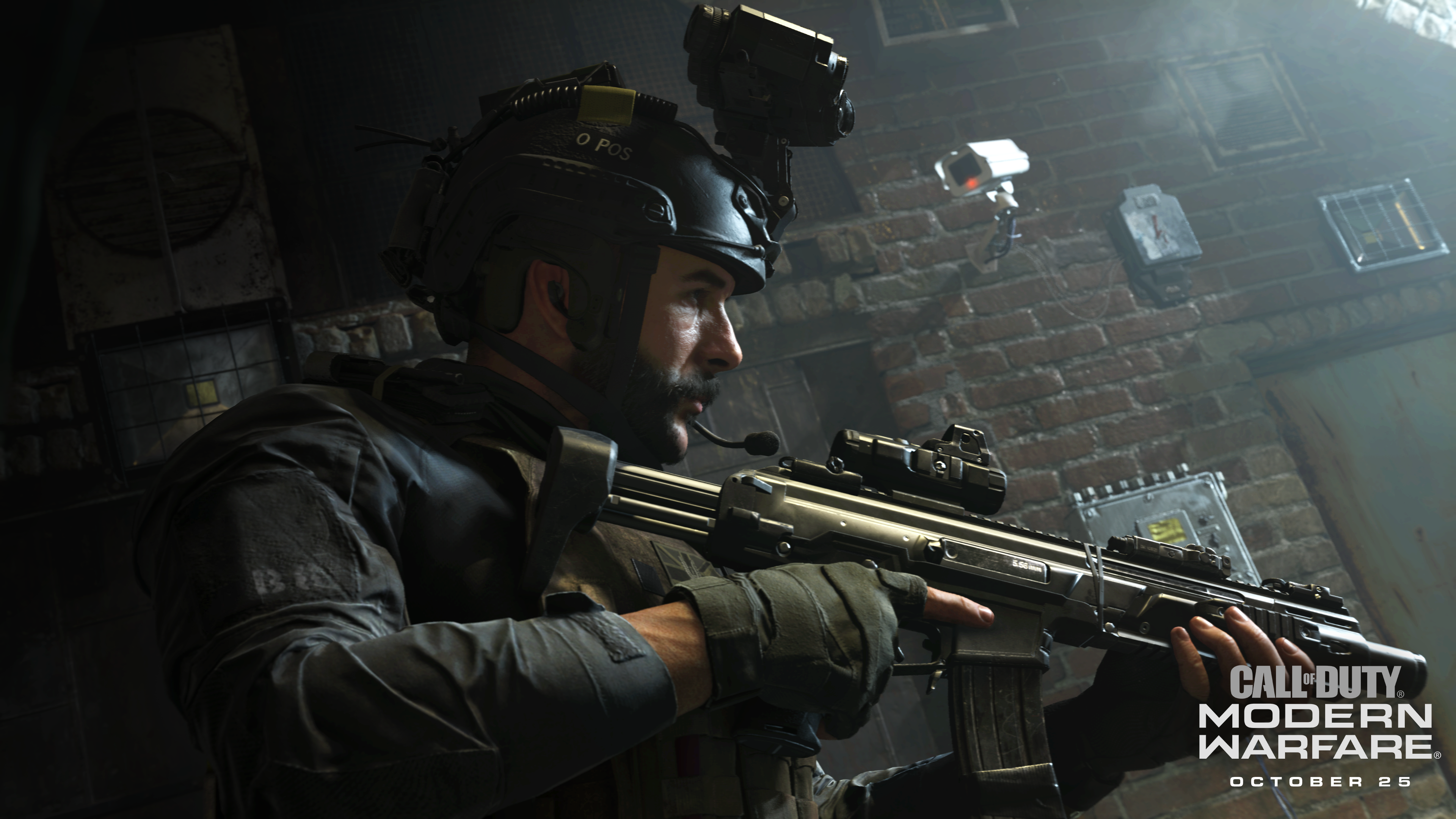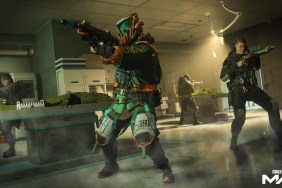While we’re all excited about the next generation of consoles, the end of a current console generation is nothing to overlook. Often, this period is when developers unlock its full potential, wringing out every possible bit of power they can. Just look at games like The Last of Us or Grand Theft Auto V, both of which first released at the tail end of the PS3’s life. This generation’s last hurrah might have impressive looking games like Death Stranding, but Infinity Ward wants to make its mark with Call of Duty: Modern Warfare, using groundbreaking technology and all-new techniques that will set a benchmark for future game development.
Infinity Ward might be making another game under the Call of Duty franchise banner, and it might be titled Modern Warfare, but the tech and engine that power this game are unlike anything we’ve seen before in gaming. We were invited to Infinity Ward to sit down with the developers get a good long look at how next-generation quality technology will power a complete reinvention of Call of Duty, and how they are doing it on this generation of consoles.
‘How Real Can We Make It?’
Infinity Ward set out in pursuit of ultra realism. The developers wanted to deliver the harsh realities of war in ways that no games had ever done before, and they determined that in order to do this, things needed to be as authentic as possible. That meant a complete overhaul of what the studio knew about developing games. “How real can we make it?” was the question they kept asking themselves, and apparently, a question they kept answering.
The first thing I was floored by was the visuals, which look incredibly lifelike. All gameplay footage shown was running on a PS4 (presumably a Pro, though I was assured that the game will run on a standard PS4 too). One of the tools they used to achieve the visual fidelity was photogrammetry, which is literally scanning objects or taking multiple pictures of a setting or environment and using AI to stitch those together into a 3D object or scene. Photogrammetry isn’t exactly a new technique, but Infinity Ward pioneered some of its own unique methods for implementation, including using it as an additive to compliment the game design.
In this way, the team can scan things like rubble or burnt cars or guns or whatever else they want—quite literally anything—things that would take a long time to mold and place by hand, and they can get a great starting point that only needs small tweaks. It looks far more realistic and believable because it uses real objects. A pile of rubble can look more natural and less “designed,” and all with less effort so that the artists can focus their attention on things other than meticulously placing shattered pieces of a building. Campaign Gameplay Director Jacob Minkoff compared it to a Hollywood prop house, but the technique doesn’t just apply to items. Infinity Ward used it for scenery and settings too. They used it for characters. They even used it for bodies on the ground.
In your standard video game, a “dead body” laying on the ground is often just a character model that is posed to look dead and then placed on the ground, however this lacks the kind of weight that an actual body would have. In order to capture that gravity, they invited developers at the studio to lay in their custom rig, complete with 200 cameras in trusses that take photos from all different angles. With a single click, that data was captured and fed to the photogrammetry AI, which would soon spit out a 3D render that better exemplified the gravity of the human body and how it would naturally lay. It can capture reality, subtly, and nuance that’s just not possible (or at least extremely difficult and time consuming) to artificially construct.
With the realistic environments, they didn’t want want characters sticking out as if they didn’t belong. The realism of the people in the game needed to match, so they used similar photogrammetry techniques during the motion capture process in order to create hyper-realistic characters. Everything comes together in an amazing way to create one of the most realistic games, visually, that I have ever laid my eyes on. It’s not just the visuals though. It’s about capturing the soul of the character, which you simply can’t quite get through a traditional rig. Forget the traditional motion capture. This is full on motion photogrammetry, which allows actors to essentially cast their likeness right into the game, right down to the smallest ticks, quirks, and mannerisms.
While talking about characters, they started to dive into equipment and costume design, which yielded a lot of incredible little details. There are physics objects on characters that will move around realistically. The cloth simulations are unreal—even in the pre-alpha state that was shown—and it allows the team to do character designs that simply weren’t possible before. We were briefly shown some incredible models of a character wearing a ghillie suit, for example, and how the cloth physics of the suit interacted with the character’s movement. For the guns, they actually measured and modeled the luminosity of different metals in order to make sure that the lighting interacted with each of them correctly.
Every Spectrum of Light
I’ve always held that lighting is a huge component of what has made this generation’s graphics look so good. If a game can get lighting right, it’s got a huge leg up on the competition in terms of visual fidelity. Infinity Ward didn’t just want the lighting to look right. They wanted it to behave right too, which meant also changing how it functioned with things like night vision goggles and thermal scopes.
In past games, “night vision” has been a fancy term for putting a green filter on the screen and saying “okay, now you can see in the dark,” but the behavior of the night vision goggles didn’t really work how they would in real life. For Call of Duty: Modern Warfare, Infinity Ward created an infrared wavelength of light that lives alongside the traditional world lighting. When you activate night vision, it behaves appropriately, amplifying the infrared and ignoring lighting where infrared isn’t present. They demonstrated this effect by toggling back and forth between the two modes on one scene, showing the differences in shadows, details, and how the goggles played with the infrared light coming from the player’s head lamp. Notice the reflector tags on the soldiers in the image below, which don’t show up under normal lighting.
The other big part of realism is volumetric lighting, which is how light plays in the environment and mass of the empty space. Every bit of empty space in the game has density data, and particulates will change the lighting, offering far more realism than most games’ global lighting models. In truth, real lighting isn’t just the light from the sun or from that lamp in your room. It’s how that light interacts with the various objects and surfaces. Simple single-point global lighting in games has rarely been able to capture this atmospheric effect created by the environment, but using ray-tracing technology, Infinity Ward is managing to do so with Modern Warfare.
All of the lighting is rendered in realtime, which means lights can be used to tactical effect within gameplay too. Showing off a mission where a special ops team takes down a terrorist cell in a townhouse, they demonstrated shooting out the main light and using night vision to eliminate any terrorists in the room. They then showed what this same scene might look like had we chosen not to remove the light from the equation, which painted quite a different picture, both visually and tactically.
Oh, and I mentioned thermal imaging? Objects and textures actually have Fahrenheit data built into them, so what you are seeing through the thermal vision isn’t just programmed visuals, but actual heat signatures of the objects you are looking at. As a fun detail and even more added realism (at least for the scene that was shown), they ran this image through a compression algorithm and then extracted it again to get the same kinds of artifacts that an actual satellite relayed thermal image might have. There are no shortcuts here.
Closing the Gap
Graphics are only one side of the story in that pursuit of realism. Video game environments are traditionally scaled up by about 30% in order to allow the characters to fit in those spaces and let players feel comfortable playing in them. Once you start creating realistically scaled doors, hallways and objects, you start running into problems with the character’s hitbox clipping through solid objects. AI begins to have problems navigating the tight spaces. Even if those problems have been solved, with the player’s hitbox scaled down, they can suddenly see surfaces much closer than is normally intended. Infinity Ward wanted to do one-to-one scale though, so they set about creating a graybox environment at scale to methodically find and eliminate every problem that came along with this new approach.
According to Jacob Minkoff, it took the team more than two years to get the one-to-one scaling of the environment to work exactly right as they dealt with problem after problem it created. It took a completely redesigned AI system, reconfigured player hitboxes, and a whole lot of trial and error to refine it. In order to solve the problem of blurry textures up close (after finally solving the hitbox problem) the team used a technique called microtiling, which layers textures and provides increased fidelity when you are close to an object. In the end they came away with something that has a much more tight feel, something that helps to drive home the weight, realism, and intensity of the game’s narrative. The usual 30% increase, while comfortable and easier to develop for, simply felt too much like a standard “video game” for what Infinity Ward wanted to achieve.
What Makes a Weapon?
What would a Call of Duty game be without guns though, right? Weapons received an exhaustive overall. Everything from the way that bullets interact with what’s being shot to how sounds reverberate around the environment not only gives Call of Duty: Modern Warfare a whole new feel, but it amplifies the realism of each and every weapon. Animations were reworked to show more realistic handling. That “video gamey” weapon sway idol animation was reduced, and the gun is no longer bolted to the camera, allowing it to trail ever so slightly as you turn from side to side. These animations are actually all different per gun too, so a heavier weapon will react differently than a small and light pistol.
The presentation then broke down the audio components of the weapons, from the sounds of the gun’s mechanisms itself, to the bullet’s interaction with the environment, and even the tiniest details, like audio from the shell casings, realistically reacting to the surfaces that each one hits. There are different sounds for hip fire versus ADS (aiming down sights). Sounds reverberate in the environment differently, so a gunfight in a subway tunnel sounds different than one on a city street. They demonstrated these differences in real time, moving around a closed environment to show the different ways the guns audio reacts based on where you are. The sounds use ray-tracing technology to simulate how they would move in a 3D space before reaching your ears. Explosions do the same thing, which again was demonstrated in real time for us.
The speed of sound is also adhered to, which means that a bullet can travel faster than the audio can reach your ear (and bullets are actual objects in this game, not hit scan, which means that they do have travel time). Depending on the distance from which a gun is fired, you may hear the whiz of a bullet just ahead of the crack of the gunshot. It’s tiny details like these audio nuances that players may not consciously notice, but that will help further immerse them in the realism that Infinity Ward is trying to create.
Is Modern Warfare the Future?
All of this new technology wasn’t created just for Modern Warfare either. They started a whole new tech-based studio under Activision and headquartered in Poland to refine and offer these advanced technologies out. The studio uses this new tech for ultra realism, pioneering new methods and tricks for animation and rendering. While getting a rundown of everything that powers Call of Duty: Modern Warfare, I couldn’t help but think about Sony’s soft reveal for its next-gen console. “This is next gen. This is next gen,” I kept saying to myself over and over again, but no. Infinity reminded us numerous times that everything we were seeing was running on a PS4. All of the tech they talked about will be packed into the PS4 version of the game.
I put that next-gen thought to Jacob Minkoff, telling him that this smells an awful lot like next-gen tech to me. His reply was that he honestly doesn’t have any insight on what’s coming next. He’s been focused on building Modern Warfare for this generation of consoles. I wasn’t satisfied with what felt like a “PR-safe” answer, but he continued, reminding me that it’s often the early titles in a console generation that are little more than just late last-gen titles with their numbers cranked up. He said that a lot of the biggest innovation comes as development studios seek to eke out every last bit of power at the end of the console cycle and push the hardware to its absolute limits.
Either way, all of this new technology positions Infinity Ward (and Activision, for that matter) in a great place going into next-gen. They are already all set up with a cutting edge tech-based studio that is pushing the boundaries and expectations of the medium. Raising the ceiling of what’s possible as next-gen rolls around will be an incredible opportunity for them. Until that time though, Call of Duty: Modern Warfare is going to serve as a window into what the future of games may hold. I just still can’t believe that what I saw at Infinity Ward is coming out later this year.
Call of Duty Modern Warfare preview held at Infinity Ward’s studios. Travel and accommodations were provided by Activision.
